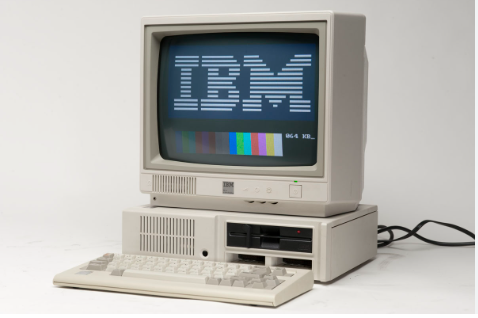
A Brief History of Early Computers: From Abacus to ENIAC
The story of computers didn’t begin in the 20th century—it started thousands of years ago with simple counting tools. From wooden beads to electromechanical machines, the evolution of computing devices reflects humanity’s constant drive to solve problems, save time, and enhance accuracy. In this post, we’ll explore a timeline of key developments in early computing—from the ancient abacus to the groundbreaking ENIAC.
The Abacus (circa 2400 BCE)
Invented: Around 2400 BCE (Mesopotamia, later used in China, Egypt, Greece, Rome)
Purpose: A manual tool for performing arithmetic operations.
The abacus is widely considered the earliest computing device. It consists of a wooden frame with rods and beads that represent units, tens, hundreds, etc. Users could quickly perform basic arithmetic like addition, subtraction, multiplication, and division by manipulating the beads.
Fun Fact: In some regions, merchants still use the abacus today due to its speed and reliability for calculations.
Mechanical Calculators (17th Century)
1. Wilhelm Schickard’s Calculating Clock (1623)
Invented by: Wilhelm Schickard (Germany)
Claim to Fame: First known mechanical calculator.
Schickard’s device could add and subtract six-digit numbers using a gear-based system. Unfortunately, his invention didn’t gain widespread attention due to his early death and the loss of his machine in a fire.
2. Blaise Pascal’s Pascaline (1642)
Invented by: Blaise Pascal (France)
Use: Designed to help his tax-collector father with arithmetic.
The Pascaline could add and subtract directly by turning dials connected to a series of gears. Though limited in function, it marked an important step toward automated calculation.
3. Leibniz’s Stepped Reckoner (1672)
Invented by: Gottfried Wilhelm Leibniz (Germany)
Advancement: Introduced multiplication and division via stepped drum mechanism.
Leibniz’s work laid the theoretical foundation for binary computation, which modern computers use today.
Charles Babbage and the First Computer Concepts (19th Century)
The Difference Engine (1822)
Invented by: Charles Babbage (England)
Purpose: To automatically calculate mathematical tables.
Although never fully built in his lifetime due to funding issues, the Difference Engine was a powerful mechanical calculator designed to eliminate human error in calculations.
The Analytical Engine (1837)
Also by: Charles Babbage
Significance: Often regarded as the first design for a general-purpose computer.
It included components like:
-
Arithmetic logic unit (ALU)
-
Control flow (loops and conditionals)
-
Memory (store and punch cards)
Ada Lovelace, a mathematician and writer, created the first algorithm intended for this machine, earning her the title of the world’s first computer programmer.
Herman Hollerith and the Tabulating Machine (1890)
Invented by: Herman Hollerith (USA)
Used for: 1890 U.S. Census
Hollerith’s tabulating machine used punched cards to store and process data—significantly speeding up data handling. His invention led to the founding of IBM (International Business Machines), a major force in computing history.
Electromechanical Computers (1930s–1940s)
Z3 Computer (1941)
Invented by: Konrad Zuse (Germany)
Claim: First programmable digital computer.
The Z3 was a fully functional electromechanical computer. It used binary arithmetic and floating-point numbers, foreshadowing many modern computing principles.
ENIAC – The First Electronic General-Purpose Computer (1945)
Full Name: Electronic Numerical Integrator and Computer
Invented by: John Presper Eckert & John Mauchly (USA)
Location: University of Pennsylvania
Purpose: Designed for the U.S. Army to calculate artillery firing tables.
Key Features:
-
18,000 vacuum tubes
-
30 tons in weight
-
150 feet long
-
5,000 additions per second
ENIAC was programmable, though it required manual rewiring. Unlike its electromechanical predecessors, ENIAC was fully electronic, making it dramatically faster and more powerful. It marked the beginning of the modern computer era.
Timeline Summary: Early Computing Milestones
| Year | Invention | Inventor | Contribution |
|---|---|---|---|
| ~2400 BCE | Abacus | Unknown | First counting device |
| 1623 | Calculating Clock | Wilhelm Schickard | First mechanical calculator |
| 1642 | Pascaline | Blaise Pascal | Gear-driven calculator |
| 1672 | Stepped Reckoner | Gottfried Leibniz | Multiplication/division calculator |
| 1822 | Difference Engine | Charles Babbage | Mechanical computing of tables |
| 1837 | Analytical Engine | Charles Babbage | First general-purpose computer concept |
| 1890 | Tabulating Machine | Herman Hollerith | Data processing with punched cards |
| 1941 | Z3 | Konrad Zuse | First programmable digital computer |
| 1945 | ENIAC | Eckert & Mauchly | First electronic general-purpose computer |
Legacy and Impact
From humble tools like the abacus to revolutionary machines like the ENIAC, the evolution of early computers laid the foundation for the digital world we live in today. These milestones reflect human ingenuity and the relentless pursuit of innovation—a journey that transformed basic arithmetic into the vast field of modern computing.
Final Thoughts
The early history of computers is not just about machines—it’s about visionaries who imagined the impossible and made it real. Whether it was Charles Babbage sketching out the first computer in the 1800s or ENIAC blazing a trail for electronic computation, each step has brought us closer to the powerful technology we use today.
“Those who cannot remember the past are condemned to repeat it.” – George Santayana
Understanding our tech roots helps us appreciate where we’re headed next.


